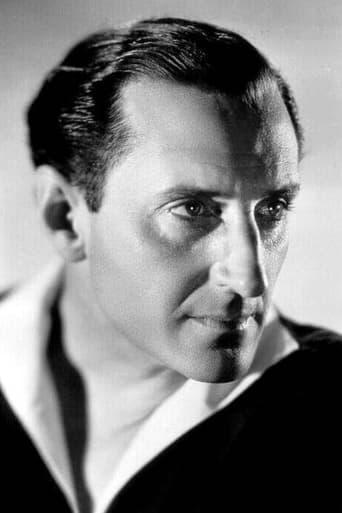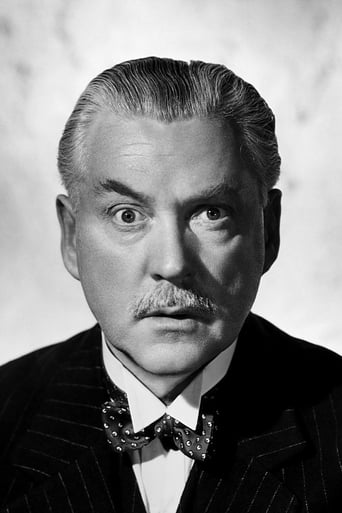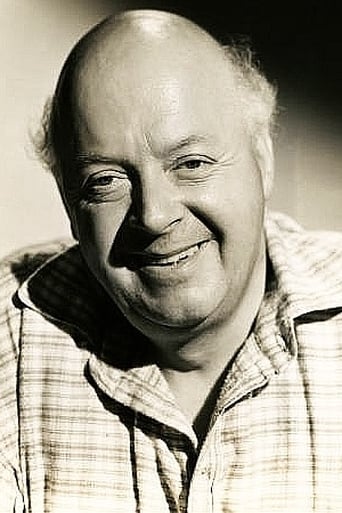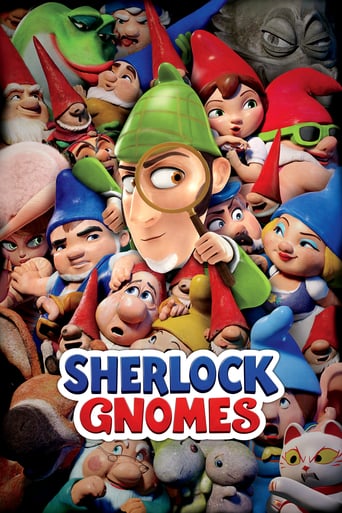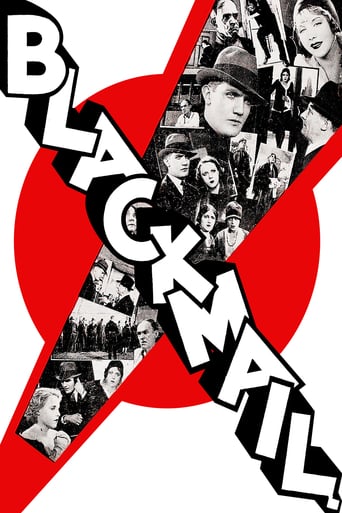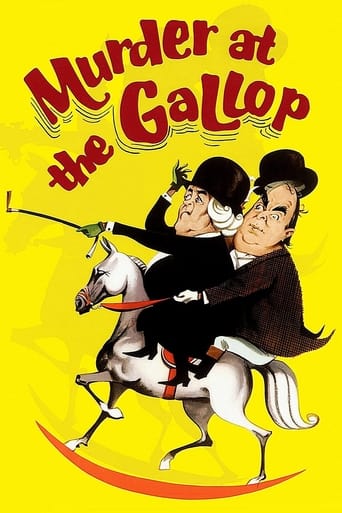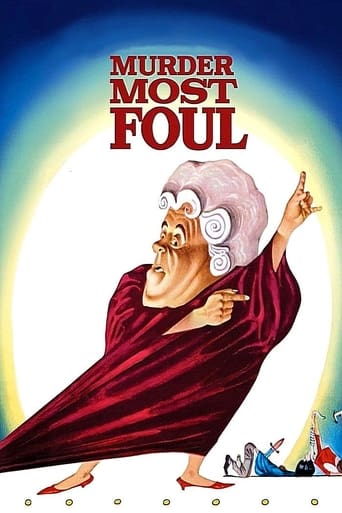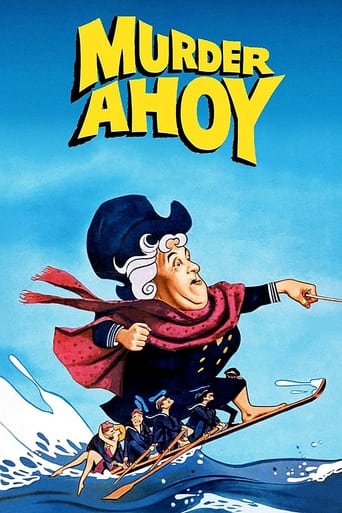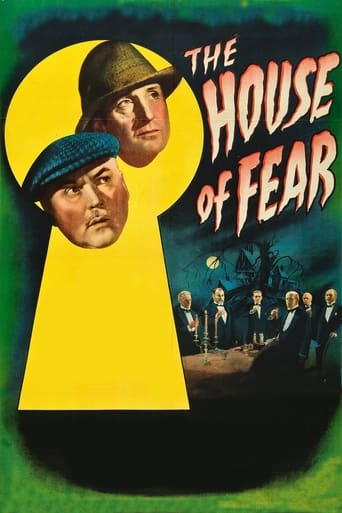

The House of Fear (1945)
The Good Comrades are a collection of varied gentlemen who crave one thing - solitude. They reside at Drearcliff House, ancestral home of their eldest member. All seems serene and convivial until one by one the members begin to perish in the most grisly of manners. Foul play is suspected by the Good Comrades' insurance agent, who turns to Sherlock Holmes and Dr. John Watson for guidance.
Watch Trailer
Cast
Similar titles
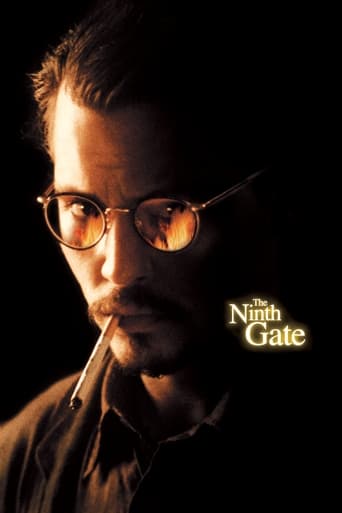
Reviews
I love this movie so much
Simply Perfect
Plenty to Like, Plenty to Dislike
There are moments in this movie where the great movie it could've been peek out... They're fleeting, here, but they're worth savoring, and they happen often enough to make it worth your while.
I'll start by saying this is one of my favourite in the series of the movies starring Rathbone as the legendary detective. To say it's only very loosely based on Conan Doyle's 'The Five Orange Pips.' is a bit of an understatement, there are very few parallels with the original text, but that doesn't matter. The screenplay is great, very entertaining and full of suspense. Dare I say this has more of a feel of an Agatha Christie, then a Conan Doyle, Holmes is here very much as a Detective then a spy in disguise.Some great moments, my favourite I think being Watson being spooked and shooting at a suit of armour and a cat, very funny. Naturally Lestrade is called in (Even up to Scotland,) and as always he and Watson have some funny scenes.Rathbone is on fine form, it seems apparent that he enjoyed making this one, he is very much at ease.A great mystery, full of suspense that will have you guessing til the end. 9/10
Although beginning suspiciously like a rework of Agatha Christie's "And Then There Were None," the eighth entry in Universal's Sherlock Holmes series, "The House of Fear," accumulates clue after clue that lead to a solution only a few sharp viewers will guess before Holmes himself does. Seven wealthy retired gentlemen with no close relatives gather at a remote seaside manor house in Scotland. An envelope addressed to one of the men arrives mysteriously with seven orange pips inside, and the recipient is later found murdered. The victim's insurance policy names the other six men as beneficiaries, and an agent from the insurance company enlists the aid of Sherlock Holmes to investigate the death. Produced and directed by a veteran of the Holmes series, Roy William Neill, from a screenplay that Roy Chanslor adapted from Arthur Conan Doyle's story "The Five Orange Pips," the engrossing film ranks among the best of the Universal series. The script offers Nigel Bruce as Doctor Watson amusing opportunities to verbally spar with Dennis Hoey as Inspector Lestrade and to shine in several solo scenes, in one of which he identifies a critical clue that leads to Holmes solving the mystery. Basil Rathbone inhabits the Holmes persona with perfection, perhaps to his own disenchantment at being stereotyped as the character. Paul Cavanaugh, who played Lord Penrose in "The Scarlet Claw, returns as Doctor Merrivale, a member of the men's group. Among the supporting players, Aubrey Mather stands out as Bruce Alistair, another of the original seven gentlemen, and Sally Shepherd is the memorably humorless housekeeper, Mrs. Monteith, who delivers the envelopes that contain the orange pips. Virgil Miller, who lensed "The Pearl of Death," provided the evocative black and white photography that utilizes dramatic shadows and occasionally askew angles to enhance the mystery that enshrouds the sinister Scottish manor.What initially seems overly familiar Agatha Christie territory soon evolves into a deeper mystery that fully engages Holmes's intellect to unravel. From Rathbone and Bruce to the group of seven, the housekeeper, a tobacco merchant, and a group of seamen, the performers are all in fine form; the script is excellent, the direction taut, the photography atmospheric, and "The House of Fear" stands tall among the Basil Rathbone/Nigel Bruce Sherlock Holmes films.
***SPOILERS*** Things got a bit suspicious to insurance salesman Chambers, Gavin Muir, when two members of the exclusive "Good Comrades Club" were killed with their bodies burned and mutilated beyond recognition. That's when they received mysterious letters containing seven in the case of Ralph King, Richard Alexander, and six in the case of Stanley Reaburn, Cyril Delevanti, orange pits. With King & Reaburn being members of the "Good Comrades Club" each of their insurance policies, being 1000,000 pound sterling, was to be split up among the surviving five club members.Chamers getting his good friend Sherlock Holmes, Basil Rathbone, together with his constant companion Dotcor Watson, Nigel Bruce, to investigate the two mysterious deaths other members of the club began to have the same kind of deadly accidents! With their remains completely obliterated to the point where they were left totally unrecognizable! What at first seem to be obvious in the "Good Comrades Club" members deaths is that one of them is staging their "accidents" so in being the sole survivor of the group he'll collect all the insurance, amounting to 700,000 pound sterling, money!It's the murder of local tobacco shop owner Alex MacGregor, David Clyde, that sets off alarms in Sherlock Holmes' head to who the real killer was. It's not that MagGregor was murdered and didn't die accidentally like the "Good Comrades" but that he wasn't even a member of that exclusive Club! It was that MacGregor saw something, or someone, on the beach one evening that he wasn't supposed to see and that in the end cost him his life. It was in that clue, MacGregor's murder, that Holmes realized what exactly was going on in the strange deaths of the "Good Comrades". That and also Doctor Watson suddenly or on impulse deciding to try smoking MacGregor's left over tobacco that exposed to Holmes not only the reason for the "Good Comrades" deaths but also why they died so horribly!More like a modern horror slasher flick then a 1940's Sherlock Holmes mystery movie "The House of Fear" thankfully didn't show the results of the horrible deaths, which were more like those in the recent "SAW" films, of its victims which would have been far too much for its audience back then in 1945 to watch!
"Murder is an insidious thing, Mr. Watson. Once a man has dipped his fingers in blood, sooner or later he'll feel the urge to kill again."Wealthy members of a prestigious club, known as The Comrades(..retired friends without ancestral heirs, live together in a Scotland castle)are being bumped off by a mysterious killer who leaves a small envelope entailing a number of orange pips with the next victim's name on it(..the pips are the number of the members left alive after the recipient's death)..the murders are rather hideously presented, the victims bodies horribly disfigured to leave no identification, except certain little items which each member carried on their person, whether it be a signet ring or a familiar tattoo. An insurance man calls upon Sherlock Holmes and Dr. Watson to solve the case because the members still alive changed their policies so that each other would receive their inheritance in case they wound up dead. Arriving to the castle, Holmes is quite baffled by a series of events while bodies continue to pile up, but soon little details(..such as the murder of a tobacconist, suspicious footprints, a body removed from it's grave, an empty tobacco case)emerge and he, along with Watson, whose life is threatened multiple times, soon piece together the clues in order to uncover a brilliant, but flawed, scheme that will lead them to a murderer.Great dark house chiller with a really nifty finale as Holmes and Watson discover a sinister plot that almost works, with certain minute mistakes unraveling as they put together the clues available. Poor Watson and soon arriving Scotland Yard detective, Inspector Lastrade(..series regular Dennis Hoey)often play patsy to the wily Holmes who must embarrass them at times when pointing out their bumbling mistakes at pointing fingers at who they believe to be the killer, when all the details haven't been assembled together. Nigel Bruce is wonderful comic relief as Watson, often assigned to watch over the Comrades when he has trouble even protecting his own neck. The film has a gallery of suspects, with lots of interesting characters among the Comrades, all a bit suspicious in one way or another, with motive to kill. Aubrey Mather in a colorful part as the affable, soft-spoken Alastair and Paul Cavanagh as the obviously questionable surgeon Dr. Simon Merivale who represents the film's most blatant suspect;he's mentioned early on as perhaps behind the slaying of his wife, and Merivale is often seen reading a murder mystery as if teasing Holmes to catch him in the act. Basil Rathbone is perfect as you'd expect in the role of Holmes, this time showing a degree of puzzlement due to just how many suspects there are, knowing with his inquisitive mind that there's something feasible which explains the odd nature of how the murders are set up and reasonable answers behind the destructive appearances of the bodies when found as if the work of a fiend. Director Roy William Neill provides an ominous mood through effectively noirish B & W photography, using the darkness of night, often following Watson running around trying to catch a killer while Holmes is elsewhere. There's a touching scene at the end between Holmes and Watson(..which just describes why Rathbone and Bruce were so wonderful together as the investigating duo)as they celebrate a job well done while Inspector Lestrade(..who had to be led by Holmes like a horse to a water trough)gets the credit by the press. You can see at times how much fun Rathbone has with Holmes at the humorous expense of Bruce's bumbling Watson, smoking away at his pipe. I think this is one of the finest examples of Holmes/Watson under the elegant treatment only the Universal Studios could provide. Watson's work opposite an owl during a grave-digging sequence is hilarious, as is his scene shooting a pistol, aimed at anything that slightly moves.
